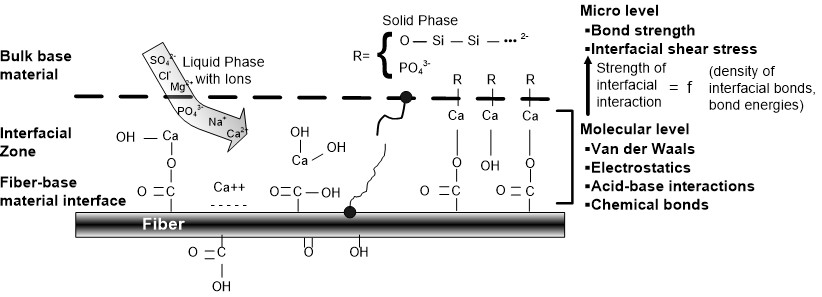Molecular Scale Interface Engineering for Calcium-Based Composites
Among the various phenomena that influence calcium-based composite materials, the interfacial interaction between the solid phases, the carbon reinforcing structure, and any surrounding liquid is the most important. Behaviors at the reinforcing structure–solid phase interface and reinforcing structure–liquid phase interface are highly dependent upon the local molecular arrangement and dynamics (i.e., interaction energy and molecular diffusion). They must be accurately characterized in order to provide a fundamental understanding of the complex, interfacial interactions and interface load-transfer mechanisms that can, in turn, provide the building blocks for models of macroscopic constitutive behavior.
Our group utilizes molecular dynamics modeling under equilibrium and non-equilibrium conditions to understand interfacial molecular structure and dynamics at reinforcing structure–solid matrix phase–liquid phase interfaces that control reinforcement mechanisms and how they relate to interfacial mechanical behavior.

| Selected References
“Interaction energies, structure, and dynamics at functionalized graphitic structure–liquid phase interfaces in an aqueous calcium sulfate solution by molecular dynamics simulation,” F. Sanchez and L. Zhang. Carbon, 48, 1210-1223, 2010. View Abstract. “Molecular dynamics modeling of the interface between surface functionalized graphitic structures and calcium-silicate-hydrate: Interaction energies, structure, and dynamics,” F. Sanchez and L. Zhang. Journal of Colloid and Interface Science, 323(2), 349-358, 2008. View Abstract. |
©2025 Vanderbilt University ·
Site Development: University Web Communications